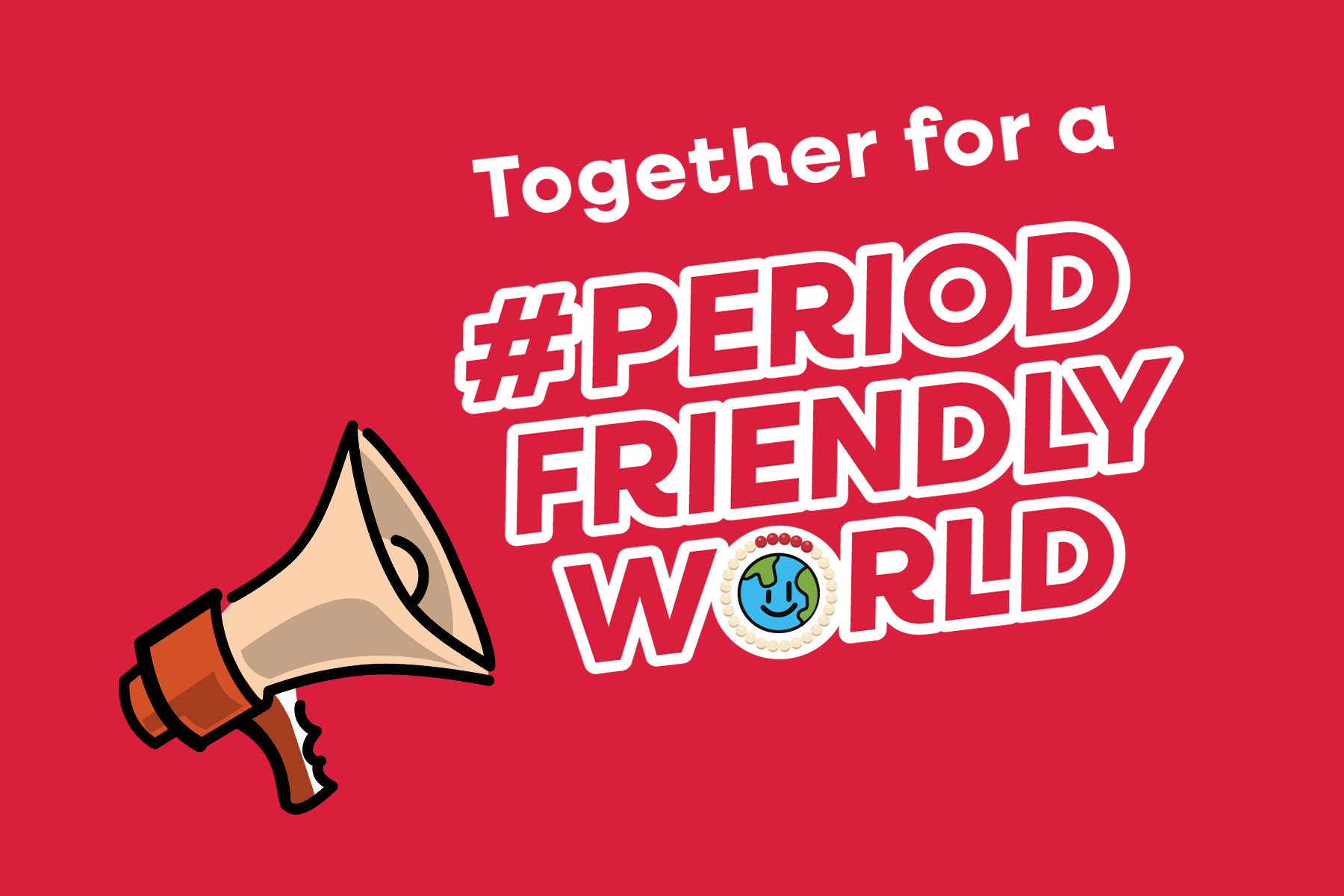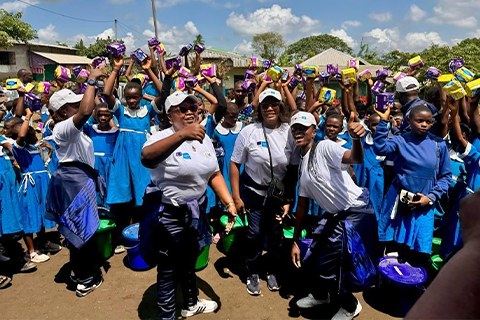Key takeaways
- MH Day achieved a higher reach despite the social drop thanks to a rise in media contributions.
- The reach number reflects actual people, not inflated potential reach.
<p id="a1"> </p>
<h2 class="heading-style-h4">A global movement that keeps growing</h2>
<p class="text-size-regular">Every year on 28 May, people, organisations, and governments come together for Menstrual Hygiene Day (MH Day) – the world’s leading campaign for menstrual health and hygiene. What began as a small awareness day has grown into a global movement for a period-friendly world.</p>
<p class="text-size-regular">This year, our collective efforts reached 971 million people worldwide – almost one-eighth of the world population. But how do we know that? Behind every figure is a meticulous process of impact measurement, data collection, monitoring, and analysis. Let’s take a closer look at how this works.</p>
<p id="a2"> </p>
<h2 class="heading-style-h4">Why reach matters</h2>
<p class="text-size-regular">The overall <span class="text-weight-semibold">MH Day reach</span> is one of the key metrics we use to illustrate the growth and progression of Menstrual Hygiene Day every year. It’s central to our monitoring because:</p>
- it shows that our collective campaigning keeps menstrual health and hygiene on the global agenda,
- every person reached is another step towards combating stigmatisation and taboos,
- the scale of attention proves the relevance of the topic and can be used to put pressure on decision-makers, and
- the number reflects the drive and momentum of the movement for a <span class="text-weight-semibold">period-friendly world</span>.
<p class="text-size-regular">The overall reach is an important catalyst – a sign of visibility, engagement, and potential for impact that fuels deeper progress.</p>
<p id="a3"> </p>
<h2 class="heading-style-h4">971 million actual people: understanding MH Day reach</h2>
<p class="text-size-regular">First, some clarification: when we talk about reach and the other impact metrics, we refer to the <span class="text-weight-semibold">campaign phase</span> – the period around MH Day itself. That’s because the campaign, and with it the monitoring period, extends beyond 28 May: it begins on 29 April and runs until 10 June. Another key detail: the number we share represents <span class="text-weight-semibold">actual reach</span>, not <span class="text-weight-semibold">potential reach</span>. What’s the difference?</p>
- <span class="text-weight-semibold">Potential reach</span> is an estimate of how many people could have seen a post or article based on an outlet’s or account’s total audience size. It is an upper-limit assumption — not a measure of real visibility.
- <span class="text-weight-semibold">Actual reach</span>, on the other hand, reflects a realistic estimate of how many people likely saw a post or media piece. It is derived conservatively from available data and does not simply assume that every follower or every reader saw every item.
<p class="text-size-regular">This distinction ensures that the <span class="text-weight-semibold">MH Day reach</span> figure reflects real people, not inflated numbers.</p>
<p id="a4"> </p>
<h2 class="heading-style-h4">What’s included in the MH Day reach number</h2>
<p class="text-size-regular">The 971 million figure combines two main channels of communication and engagement: <span class="text-weight-semibold">social media and media coverage</span>. We monitor global social media and media coverage through Meltwater, a leading media intelligence and social listening platform. With their tools, we capture:</p>
- published media articles on online platforms like websites or blogs, and partially on radio or TV, but not including print.
- social media posts like on X or Reddit, but only partially on Facebook, Instagram and LinkedIn, and not including Instagram stories.
<p class="text-size-regular">These are then filtered through an extensive, fine-tuned search developed in close collaboration with Meltwater experts to ensure that only relevant MH Day–related content is included.</p>
<p class="text-size-regular">That means <span class="text-weight-semibold">we don’t count all menstruation-related content</span>. Instead, we only include posts and articles that mention at least one of the following: explicitly reference MH Day, address menstruation from a professional or educational perspective (e.g. one of the five areas of a #PeriodFriendlyWorld), call for action from governments or institutions, cover policies, programmes, or systemic change, share new findings or research, and are published strictly within the campaign phase (29 April–10 June). This excludes unrelated content like regular ads for period products or posts about personal experiences.</p>
<p class="text-size-regular">Through Meltwater, we can see the potential reach of each article or post. To calculate the <span class="text-weight-semibold">actual reach</span>, we again collaborate closely with the team at Meltwater and use up-to-date formulas tailored for each platform and type of contribution. These allow us to reduce the common overestimation to a realistic number, ensuring that our reported reach reflects real, unique people.</p>
<p id="a5"> </p>
<h2 class="heading-style-h4">Higher reach despite the social drop</h2>
<p class="text-size-regular">Even though social media contributions decreased drastically this year, MH Day reached more people than ever before. Why? Because media coverage rose again and more than compensated for the gap. Partners clearly felt the effects of shifting platform dynamics and directed their energy toward events and direct media engagement – and it paid off.</p>
<p id="a6"> </p>
<h2 class="heading-style-h4">Monitoring over the past 10 years</h2>
<p class="text-size-regular">Our <span class="text-weight-semibold">MH Day impact measurement approach</span> has evolved together with the movement. When we began in 2014, monitoring consisted of manual searches using public tools. As technology advanced, so did our own skills. Over the following years, we tested different tools, learned more about social and media monitoring, and refined the way we search.</p>
<p class="text-size-regular">Since 2020, we have collaborated with Meltwater and have professionalised our monitoring process together. Our core methodology has remained consistent since then. In the past two years, however, AI has helped us further refine and improve our text-based searches. And as global conversations around related topics – such as menopause or endometriosis – have grown, we adjusted our filters to exclude these topics to ensure our numbers continue to reflect MH Day specifically. These conversations are highly relevant to our mission of a #PeriodFriendlyWorld, but they follow their own dynamics and would distort the comparability of our long-term monitoring.</p>
<p class="text-size-regular">Together with Meltwater experts, we continuously review our search setup to ensure <span class="text-weight-semibold">transparency, accuracy,</span> and <span class="text-weight-semibold">precision</span>.</p>
<p id="a7"> </p>
<h2 class="heading-style-h4">Looking ahead</h2>
<p class="text-size-regular">Numbers tell only part of the story, but what a powerful story they tell! The 971 million people reached in 2025 represent the strength of a <span class="text-weight-semibold">global movement for a #PeriodFriendlyWorld</span> that refuses to stay silent about menstruation.</p>
<p class="text-size-regular">Every article, every event, and every shared message adds up – not just to a bigger number, but to a louder collective voice. And that voice grows strongest through collaboration. In our next post, we’ll explore the <span class="text-weight-semibold">power of partnerships</span> – and how organisations, governments, and individuals around the world worked hand in hand to make a #PeriodFriendlyWorld a reality for everyone.</p>




